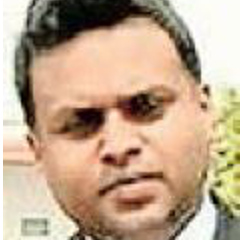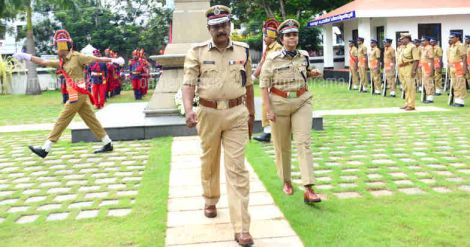The police force is independent, declares the Supreme Court in its verdict supporting T.P. Senkumar. It asserts in clear terms that his removal as Kerala police chief before he completed two years in his job was not legally justifiable. The highest seat of judiciary also makes it clear that no police officer can be a pawn in the hands of the government.
It was recently that the apex court had called Central agencies like CBI 'caged parrots.' With the verdict in the Senkumar case, the court has freed the 'caged parrot.'
The Police Act was drawn up in 1861 during the colonial days. A police commission set up by the Central government in 1977 recommended several reforms. Several reports were submitted after that with the aim of freeing the police from political pressures. There had been no action, however.
Governments take shelter under a 'special powers' plea to justify any action. But the Supreme Court order, in the Senkumar case, stresses that such special powers have no relevance in a society where law prevails.
A proper officer loves to serve without resorting to special or discretionary powers. The political leadership may not, however, like it. They won't hesitate to fire those who do not bend. It was Prakash Singh who was the DGP in UP and Assam who launched a battle against this attitude in 1996. The court then observed that the police are forced to submit to twin pressures - from politicians and the government. Also that police are made to alter their stance for important people and their confidants.
It was in this background that the apex court in 2006 directed the states to form state security commissions. The commissions were to be tasked with the crucial task of drawing up police policy, and appointing and removing police chiefs. The court also directed that top officers, SP to DGP, be assured of two-year terms.
The judges had also directed that a police establishment board be entrusted with decisions on the transfer and appointment of top police officials. Also, they wanted a grievances redressal commission to be set up to consider complaints against police.
The directives were aimed at freeing the police from external pressures. It was based on these that the Kerala state assembly in 2011 adopted the Kerala Police Act. It should be noted that the Supreme Court has, in the Senkumar verdict, criticized the fact that the Kerala Police Act has been passed after diluting the directives issued in the Prakash Singh case.
Senkumar has also taken the approach of Prakash Singh in his battle to free the police from the political domination. In many cases, police officers are forced to stay away without fighting the political leadership. One should also remember in this context that an honest Vigilance chief was asked by the government to proceed on leave.
The court has used harsh language in censuring the removal of Senkumar as DGP without justifiable reasons. The highest seat of judiciary finds that there has not been credible reasons to remove him.
This judgment would force governments to think twice before throwing out officers whom they dislike. It would raise the morale of honest police officers. Quoting the 94th para of the judgment: “In a situation where one has to choose a preference between the government and the citizen, we will give the benefit of doubt to the citizen; and will definitely show bias towards him.”
(The author is one of the lawyers who appeared for Senkumar in the Supreme Court)

























 T.P. Senkumar soon after assuming the office of state police chief. File photo
T.P. Senkumar soon after assuming the office of state police chief. File photo